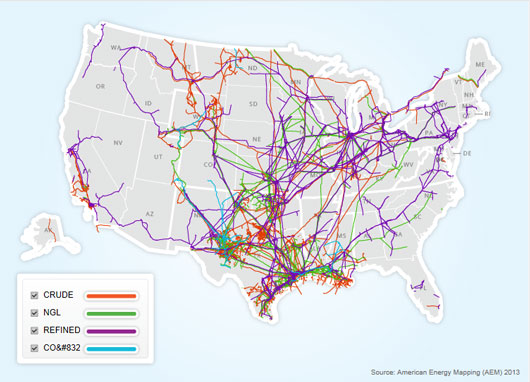
More than 190,000 miles of liquid petroleum pipelines traverse the
United States. They connect producing areas to refineries and chemical
plants while delivering the products American consumers and businesses
need. Pipelines are safe, efficient and, because most are buried,
largely unseen. They move crude oil from oil fields on land and offshore
to refineries where it is turned into fuels and other products, then
from the refineries to terminals where fuels are trucked to retail
outlets. Pipelines operate 24 hours a day, seven days a week.
The glut of U.S. oil is growing so fast that at least one pipeline owner is concerned wily traders may try to stow away crude on its network until prices improve.
Plains All American Pipeline LP is requiring customers to prove they
have a buyer or place to offload crude they’re shipping through the
company’s pipes, according to people familiar with the matter. The idea
is to prevent anyone from using Plains’s network to park oil in lieu of
higher prices.
With the key storage hub in Cushing, Oklahoma, already more than half full, concern is rising among investors and oil producers that the surfeit of American crude may overwhelm storage capacity and force companies to shut down wells. Shale explorers are dialing back drilling but it won’t have a meaningful impact on overall crude supplies any time soon.
With the key storage hub in Cushing, Oklahoma, already more than half full, concern is rising among investors and oil producers that the surfeit of American crude may overwhelm storage capacity and force companies to shut down wells. Shale explorers are dialing back drilling but it won’t have a meaningful impact on overall crude supplies any time soon.
Similar anxieties are wracking the fuel markets as the Covid-19
outbreak saps demand and foreign producers swamp global markets with
oil. Colonial Pipeline Co., operator of the busiest U.S. fuels conduit,
last week warned clients that any gasoline or diesel on their system
that had no end-user or storage reservation would be sold off to the
highest bidder.
No comments:
Post a Comment